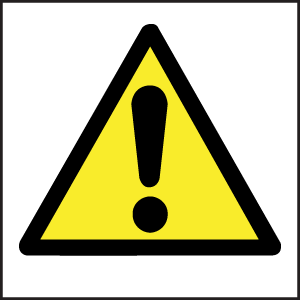| |
** If Replacing
Fewer than Four (4) Tires**
It is ALWAYS preferred and recommended that ALL four (4) tires be replaced at the same
time for continued optimal vehicle performance. However, for those cases were this is not feasible, below are some general
guidelines to consider when replacing less than four tires for a passenger or light truck vehicle, whether it is one or two
tires. If the vehicle manufacturer has alternate recommendations always follow those recommendations. |
Replacing Two (2) Tires - When a pair of replacement tires is selected in the same size and
construction as those on the vehicle, the two newer tires should be installed on the rear axle. Two new rear tires
must be of equal or greater speed rating compared to the front tires. Generally, new tires with deeper tread will
provide better grip and evacuate water more effectively, which is important as a driver approaches hydroplaning situations.
Placing greater traction on the rear axle on wet surfaces is necessary to prevent possible oversteer condition and loss of
vehicle stability.
Replacing One (1) Tire - Replacing When a pair of replacement
tires is selected in the same size and construction as those on the vehicle, the two newer tires should be installed on the
rear axle. Two new rear tires must be of equal or greater speed rating compared to the front tires. Generally, new tires with
deeper tread will provide better grip and evacuate water more effectively, which is important as a driver approaches hydroplaning
situations. Placing greater traction on the rear axle on wet surfaces is necessary to prevent possible oversteer condition
and loss of vehicle stability. |
| | Tire Mixing Can Be Dangerous |  | Driving your vehicle with an improper mix of tire sizes, constructions,
and speed ratings can be dangerous. Your car's handling characteristics can be adversely affected. You could have an accident
resulting in serious personal injury or death. Consult your
vehicle owner’s manual or authorized Tire Dealer for proper tire replacement. | - Summit of New
England Recommends that (for direct replacement tires) all four tires be of the same size, speed rating, and construction
(radial, non-radial) as specified by the vehicle manufacturer. In some cases, the vehicle manufacturer may require different
sized tires for either the front or rear axles. NEVER mix P-metric or European Metric Passenger tires.
- Match
tire size designations in pairs on an axle, except for temporary use of a spare tire.
- If two radial
tires and two non-radial tires are used on a vehicle, put radials on the rear axle. If radial and non-radial tires are used
on a vehicle equipped with dual rear tires, the radial tires may be used on either axle.
- Speed Rated
Tires - If the vehicle tire placard and / or owner’s manual specifies speed rated tires, the replacement tires must
have the same or higher speed rating to maintain vehicle speed capability.
- If replacement
tires have lower speed capability than specified by the vehicle manufacture, the vehicles speed must be restricted to that
of the replacement tire. Also, vehicle handling could be affected. Consult vehicle manufacturer or tire manufacturer for recommendations.
- With
the exception of winter / snow tires, if tires with different speed ratings are used, it is recommended that the lower speed
rated tires should always be placed on the front axle. This is to prevent a potential oversteer condition.
- Four-wheel
drive (4WD) and All-wheel drive (AWD) vehicles - If no instructions for tire mixing appear in the vehicle owner’s manual
follow these guidelines.
- DO NOT mix tire sizes. All four tires must be marked with the same tire size, unless otherwise
specified by the vehicle manufacturer. This also applies to winter / snow tires.
- DO NOT mix radial and non-radial tires. All four must
be either radial or non-radial
- DO NOT mix treads pattern types such as all-terrain and all-season.
- If
winter / snow tires are applied to the front axle of any vehicle, winter / snow tires must also be installed on the rear axle.
DO NOT apply winter / snow tires only the front axle. This applies to all passenger and light truck vehicles including front-wheel-drive,
4WD, and AWD vehicles.
- WARNING! Without winter / snow tires on the rear axle, which
have comparable traction qualities to the tires on the front axle, the vehicle may experience adverse handling characteristics.
This may result in loss of vehicle control, which could cause serious injury or death.
- Studded
winter / Snow tires - Studded winter / snow tires have higher traction qualities under most winter weather conditions.
- If studded winter / snow tires are installed
on the front axle of any vehicle, studded winter / snow tires must also be installed on the rear axle. DO NOT apply studded winter/snow tires only
to the front axle.
must
also be installed on the rear axle.
DO NOT apply studded winter/snow tires only to the front axle
|  | WARNING! Installing only two studded winter / snow tires on
the front axle of any vehicle (including front-wheel drive vehicles) without studded winter / snow tires in the rear axle
can cause adverse vehicle handling characteristics. This may result in loss of vehicle control, which could cause serious
injury or death. Follow all recommendations in the vehicle owner’s manual regarding the use of winter tires. |
| IMPORTANT! Matching Tires on Four-Wheel Drive and All Wheel Drive Vehicles:
4WD and AWD vehicles require special attention to ensure that all four tires are closely matched in diameter to avoid
strain and possible damage to vehicles differentials and/or viscous couplings. Tire inflation pressure also affects the tires
rolling circumference and should be matched according to the vehicle manufacturer’s recommendations. Always check the vehicle manufacturer’s recommendations prior to installing
new tires. |
|
|